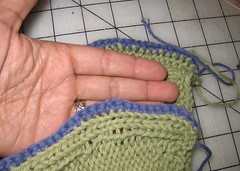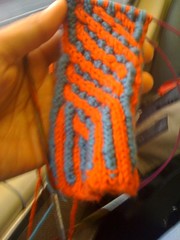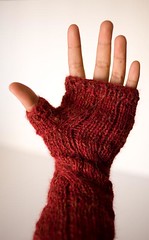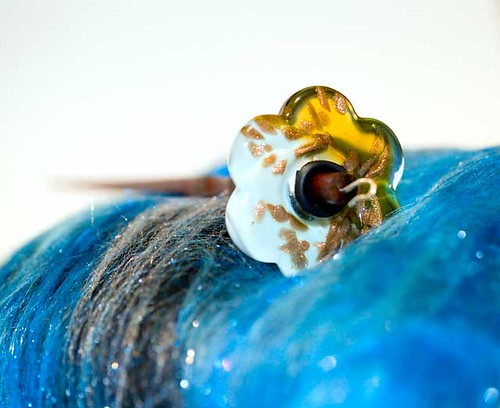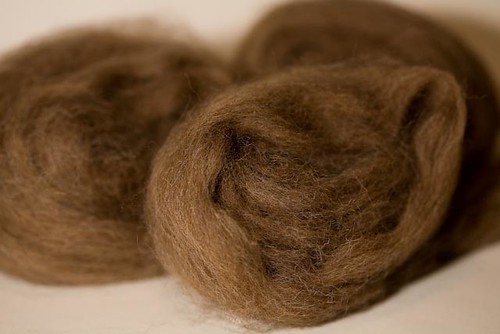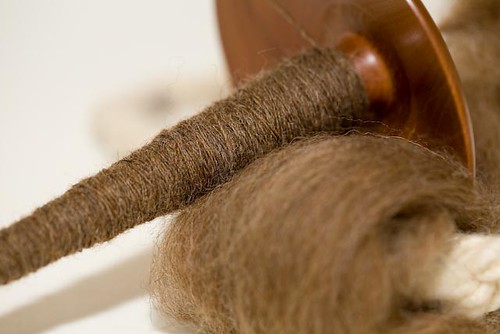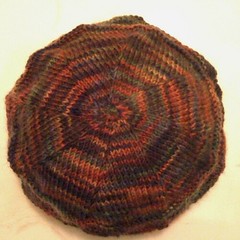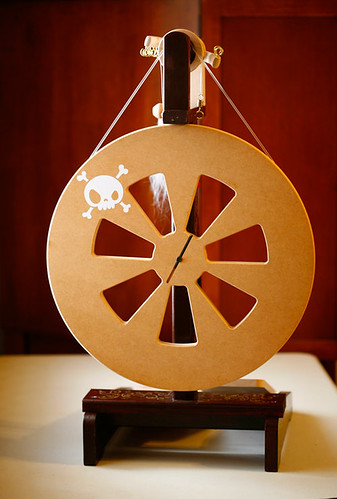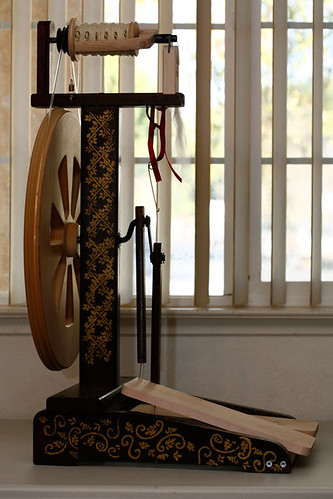Two projects came to mind:
--> a pair of vanilla socks -- two at a time; toe-up; on two circulars. The pattern was a SideStream master sock from New Pathways for Sock Knitters: Book One
--> Night Sky Karius shawl -- an easy 8 row pattern with increases in specific areas. Plus, I could use my hand-dyed / handspun yarn (Nightsky handspun)
I started both projects (because I hate casting on in a moving car) and got both to a point where it'd been easy to just pick it up again. I also decided that I would bring two spindle spinning projects as well.
So, I loaded up my Nantucket Knitting Bag (I picked up used on Ravelry) with my 4 projects.
I found myself knitting on the parts of the trip where I didn't need to drive, and during the family get-togethers.
Unfortunately, I had left my generic sock pattern at home (OH NOES!) but some very nice people on Ravelry were able to give me the rest of my Master Numbers (I had my gauge, RPI, and foot sizes, but didn't know the rest) and I was able to finish the sock (sans cuffs) on Thanksgiving Day.
I'm also about 40% done with my Nightsky, knitting most of it during the drive up and down, as it's a relatively easy pattern to memorize. I also managed to get some knitting done while sitting on couches and talking to friends at LosCon. My Nightsky Karius easily fit into my little travel purse so I could leave the large Nantucket behind.
Unfortunately, I didn't touch either of my spinning projects the entirety, but of course, if I had left them at home, I would have desparately wanted them.

